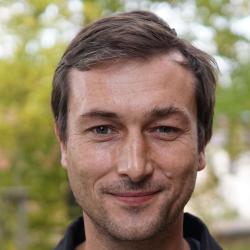Here is my latest update on paleoseismology-related literature. Plenty of new hot stuff has been published, today we have: archaeoseismology & liquefaction in Corinth, incredibly good data from the Gorkha earthqukae (Nepal), an earthquake that deviated the Po River, paleotsunamis in Israel and Taiwan, notes about tsunami boulders, and tsunamis in Greece. Enjoy!
more
Is it just me or is the frequency of papers being published increasing…? Anyway, here’s the literature update with studies on paleoseismology and active tectonics. Today we have: Faulting in the Canyonlands, seismites from the Jurassic, a fake earthquake in Cologne, dynamic triggering, news from the San Jacinto Fault, ground motion variation between repeating earthquakes, metrics to evaluate seismic hazard maps, submarine tectonic geomorphology, the 1897 Great Assam Earthquake, and a collection of papers on geophysical imaging and interpretation of outcrops. Enjoy!
more
In 2013, a MW7.7 earthquake struck Balochistan, caused a huge surface offset and triggered a small tsunami in the Arabian Sea. Immediately, the apparently strange fault behaviour caused the attention of scientists world wide and a number of papers were published. The discussion is highly interesting and still ongoing. This an interesting case for paleoseismologists, too, not only because of the cascading earthquake effects, but also because of the surface rupture distribution, from which we might learn some important lessons for our future work. Now my colleague Yu Zhou and his colleagues from Oxford University published a new paper on this event, arguing that it might be not as unusual as it seems. Their research is based on the analysis of Pleiades stereo satellite imagery, which has proven to be a very useful data source already. Yu send me a nice summary of his recent research: more
The 2015 GSA Annual Meeting will be held in early November in Baltimore and since the deadline is approaching (11 August) it is time to check paleoseismology sessions. One of the many interesting sessions will be chaired by our colleagues Mark Quigley and Tim Stahl: “T186 – Estimating the Timing and Characteristics of Continental Earthquakes from Geologic Data”. Tim told me that there will be “some great invited speakers lined up speaking on paleoliquefaction, lake varve deposits and San Andreas fault paleoseismology“. more
Lots of paleoseismology and tsunami studies are currently being published… Here’s my update on the latest papers, including: Surface ruptures, seismic swarms, tsunamites, Asian tectonics, slip rates and archaeoseismology. Plus: A very interesting study on the 1911 Chon-Kemin M8.0 earthquake in the Kazakhstan/Kyrgyzstan border region, the source process reconstruced from analogue seismograms. Thanks to Ramon Arrowsmith for pointing me to this one. Enjoy!
more
A few weeks ago I spent ten days of field work in the Suusamyr Valley in Kyrgyzstan. In the framework of the EwF Project and COMET a team from Oxford (Eleanor Ainscoe, Austin Elliott, Richard Walker) and Kyrgyzstan (Kanatbek Abdrakhmatov, Azat Moldobaev) re-visited the epicentral area of the 1992 MS7.3 Suusamyr earthquake. This thrust earthquake is quite special for it produced intense and widespread secondary earthquake environmental effects (landslides, rockfalls, secondary ruptures, mud eruptions, etc.), but remarkably short primary surface ruptures only. Actually, surface ruptures of several metres height were found near the Suusamyr river, but limited to few hundreds of metres in length. Some 25 km to the west, another set of surface ruptures appeared, which were only about 1 m in height and less than 3 km long. Here are some impressions from our field work. more
Great news from Italy – A new version of the Database of Individual Seismogenic Sources (DISS) is now online! A huge amount of work went into this latest release which has several important updates and a fantastic new amount of data. Our colleague Umberto Fracassi sent me the following description of the new features:
more
In case you need a good read for your summer holidays, here are the latest papers on paleoseismology and related fields. Today including a IAEA TecDoc about paleoseismology, an early paper on the Gorkha quake, coral paleoseismology, some tectonic geomorphology in Spain, clastic dykes, and tectonic uplift of an island in Chile. Enjoy!
more
The INQUA 2015 congress in Nagoya will not only be the place to catch up with latest science news, but also to elect new commissions and project leaders and to plan and co-ordinate the ongoing activities for the inter-congress period. Therefore, think about joining the relevant business meeting! INQUA is organized in several commissions, of which TERPRO (Terrestrial Processes) is the one which covers paleoseismology, active tectonics and tectonic geomorphology. The IFG Palacte (Int’l Focus Group Paleosesimology/active tectonics) is a sub-organization of TERPRO itself. The TERPRO Business Meeting will be held on the evening (19:00-20:30) of Tue, 28 July in room 431, and will focus on the new Commission structure and programs for the intercongress period 2015 – 2019. more
Here are my latest updates on papers and books that deal with paleoseismology, active tectonics, tsunamis and similar topics. There is a good portion of lake/turbidite paleoseismology with some beautiful seismites. We also have some more general tectonics/review papers, and an interesting attempt to establish a global fault database. Plus, there is an intense ongoing discussion about Kashmir and news from Napa. Enjoy!
You feel there’s something missing? Drop me a mail!
more

